As well as taking the complexity out of setting pods on a flat table nesting CNC, myVA Virtual Assistant simplifies the process of running nesting alongside a pod & rail CNC or executing a secondary process. In this way, it enables furniture manufacturers to extract maximum flexibility and value from their CNC machines.
Pod & rail versus flat table
Broadly speaking, there are two types of CNC machine for machining products such as kitchen cabinets, shelves, door and window frames and handrails. On a flat table nesting CNC, a porous spoilboard, sometimes known as a slave board, sits on a flat table bed with a vacuum table underneath. The panel is placed on top of the spoilboard where it is held in position by vacuum to allow accurate machining. This type of machine is suited to flat sheet work - essentially for any routing and drilling tasks that can be executed on the face of the panel.
A pod & rail table consists of carriages with rails that move in an x direction and pods in a y direction. Suction cups mounted on these carriages hold the workpiece in place via vacuum. Biesse machines also offer a quick change to mechanical clamping systems, for example, when machining window or door frames. A pod & rail machine has the advantage that it can process the edge of the piece as well as the face within one programme.
Best of both tables
In an ideal world, most furniture manufacturers would have both flat table CNC and pod & rail routing capabilities within their factories: the flat table for nested production and for cutting large sheets down to size, and the pod & rail for intricate tasks or work that needs to be performed horizontally such as drilling into the sides of a panel. However, space and budget constraints do not always allow for both, forcing most companies to opt for one or the other.
It is possible to adapt a pod & rail machine to produce flat table parts, or to add pods to a flat table machine for greater flexibility. However, conversion is time-consuming and creates a disjointed workflow.
Introducing myVA…
Biesse has conceived a solution that integrates hardware and software to make the conversion and subsequent processes seamless, efficient, and easy. MyVA acts as a Virtual Assistant to the operator, reducing machine set-up time, optimising management of jobs, improving ergonomics and automating manual processes. The net result of faster conversion and a better organised workflow is improved productivity.
The myVA system comprises four elements:
Dual screen controls
Typically, the control panel for the CNC machine and the nesting scheme display are in two separate locations. With myVA, both are incorporated within a single control station. This ergonomic dual screen configuration means the operator can see the nesting scheme whilst working on the machine and all tasks can be executed from one location. Crucially, this control console can be used to carry out nesting on a pod & rail machine that has been converted into a flat table.
Label printing
The control console also incorporates a label printer. Linked to the nesting software, this printer produces a label for each nested part. As well as printing a barcode that makes each panel easily identifiable, the labeller can apply a QR code that contains information and instructions for secondary processing that needs to be carried out on this part.
Wearable wireless reader
Using this smart glove barcode and QR code scanner, the operator can scan the barcode and/or QR code on the label to automatically add the next programme to the work list, which is displayed on the control panel.
These features really come into their own when a pod & rail machine has been converted into a flatbed for nesting, but conversion back to a pod & rail arrangement is needed for secondary horizontal work such as drilling. In this scenario, the programme instructs the operator where to position the pods for the secondary process, or, if the machine is equipped with automatic positioning, they move into place automatically.

Assisted pod positioning
When the need arises for using pods on a flat table nesting CNC, accurate pod placement is essential to avoid costly collisions with the CNC head. Historically, the operator had to carry out manual measurements to ascertain where the pods should be positioned on the table. With myVA, a laser scanner linked to the machine software shows the operator where to place the pods, which is far quicker and far more reliable. The laser projects an LED arrow to mark the location, guiding the operator and speeding up machine set-up.
Together, these myVA elements give manufacturers the flexibility to perform a nesting process on a pod & rail machine and to allow horizontal work to be carried out on a flat table nesting CNC.
Find out how myVA works on the Nesting and Horizontal processing of an FT machine AND processing on a Pod and Rail machine.


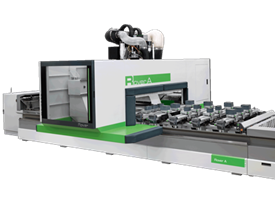
.png)
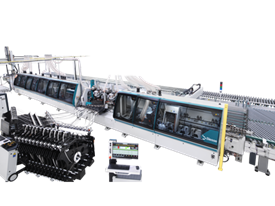
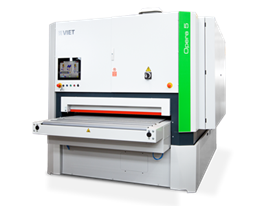
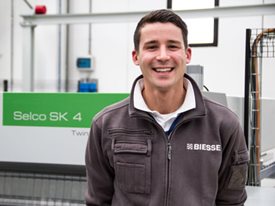
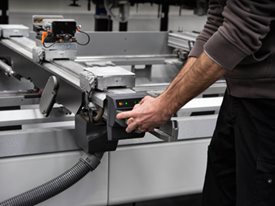
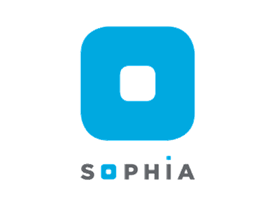
 Worldwide
Worldwide
 Italia
Italia
 United Kingdom
United Kingdom
 Россия
Россия
 France
France
 中国
中国
 Asia
Asia
 Deutschland
Deutschland
 España
España
 Schweiz
Schweiz
 North America
North America
 India
India
 Australia & New Zealand
Australia & New Zealand
 Türkiye Cumhuriyeti
Türkiye Cumhuriyeti
 Middle East
Middle East
 Brasil
Brasil